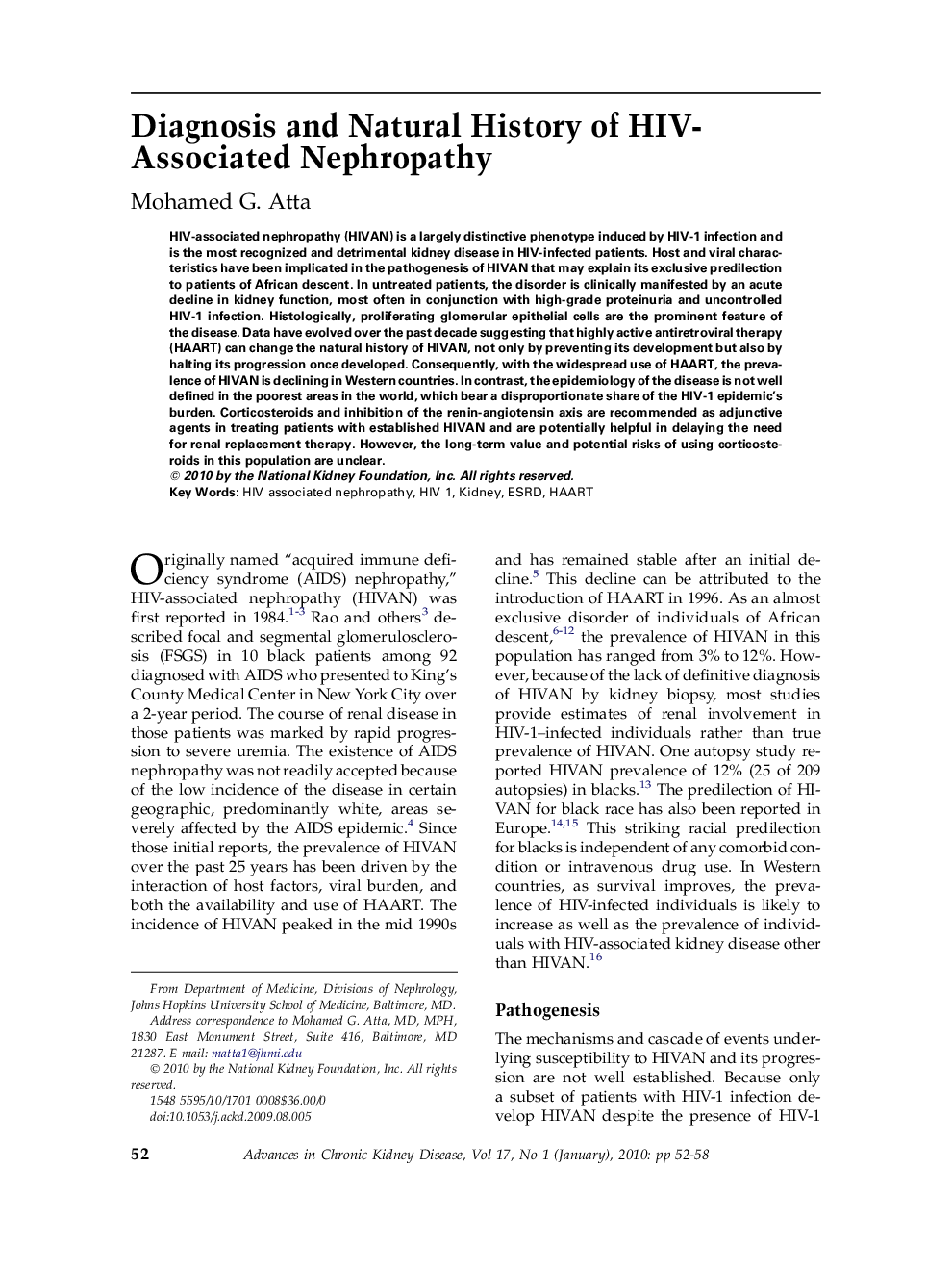| Article ID | Journal | Published Year | Pages | File Type |
|---|---|---|---|---|
| 3846902 | Advances in Chronic Kidney Disease | 2010 | 7 Pages |
Abstract
HIV-associated nephropathy (HIVAN) is a largely distinctive phenotype induced by HIV-1 infection and is the most recognized and detrimental kidney disease in HIV-infected patients. Host and viral characteristics have been implicated in the pathogenesis of HIVAN that may explain its exclusive predilection to patients of African descent. In untreated patients, the disorder is clinically manifested by an acute decline in kidney function, most often in conjunction with high-grade proteinuria and uncontrolled HIV-1 infection. Histologically, proliferating glomerular epithelial cells are the prominent feature of the disease. Data have evolved over the past decade suggesting that highly active antiretroviral therapy (HAART) can change the natural history of HIVAN, not only by preventing its development but also by halting its progression once developed. Consequently, with the widespread use of HAART, the prevalence of HIVAN is declining in Western countries. In contrast, the epidemiology of the disease is not well defined in the poorest areas in the world, which bear a disproportionate share of the HIV-1 epidemic's burden. Corticosteroids and inhibition of the renin-angiotensin axis are recommended as adjunctive agents in treating patients with established HIVAN and are potentially helpful in delaying the need for renal replacement therapy. However, the long-term value and potential risks of using corticosteroids in this population are unclear.
Related Topics
Health Sciences
Medicine and Dentistry
Nephrology
Authors
Mohamed G. Atta,
